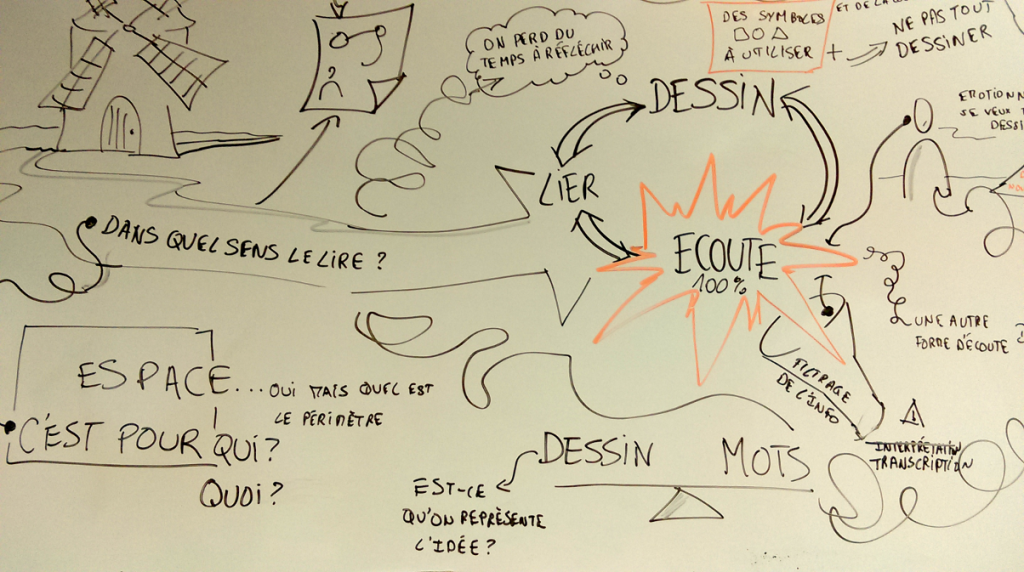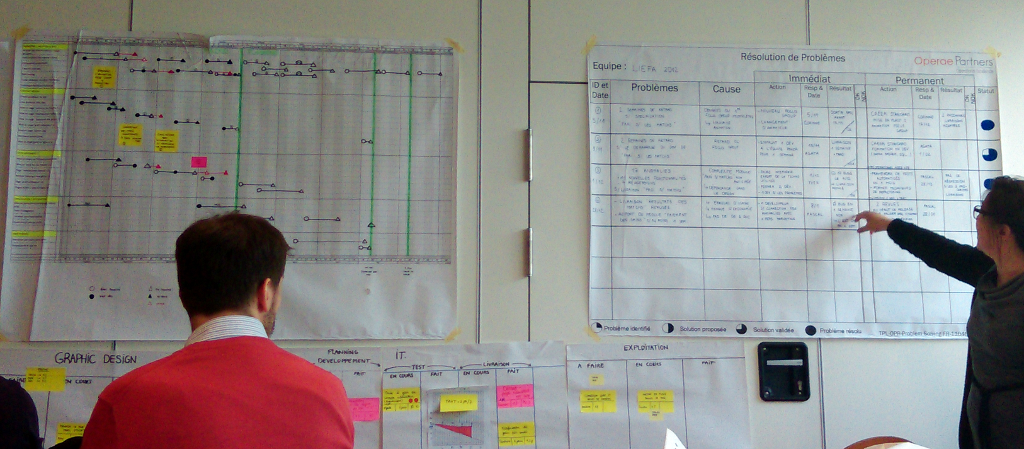Here is the next part of the Mix-IT 2015. It was a great moment…
Aller sur Mars… ou presque – Florence Porcel
The day #2 started with a keynote of Florence Porcel, who is a writer, an actress and a radio presenter. She is impassioned by Mars. She was a candidate to the Mars One expedition: an expedition initiated by a non-profit organization based in Netherlands which aims to send people on Mars by 2022. Nice trip! But only one-way: there is no plan for them to go back to the Earth… It’s a definitive move with no return. 200 000 motivated people applied. Florence did pass the first selection rounds and was around the 650th candidate on the 200 000. Wooh! But, unfortunately, she has not been taken at the last round. Right now, there are 100 people (50 males, 50 females) who are challenging to be the first “Marstronauts” of this program, but Mars One is not the only mission planned to send on the Red Planet people to embrace Opportunity and Curiosity. In first place, there is NASA which prepares a mission to send human beings on Mars but also private initiatives (one wants to send a couple in the orbit of Mars and bring it back to the Earth). It’s not for tomorrow but maybe the day after: around 2025 / 2030. So, not so long…
Nonetheless, before the first human landing on the Red Planet, there is lots of work to do. Florence presented us some missions, whose aim is to help to prepare the d-day. The Mars 500 mission was one of them. Three Russians, a French, an Italian and a Chinese have been confined in a spacecraft mockup during 500 days (right now, 520 days are needed to reach Mars). The main purpose was to see how human beings could support a long-term deep space mission from a psychological and medical point of view. Various engineering, biological and so on experiments were also achieved by the six men. Two astronauts (one American, one Russian) will stay one year in the ISS station to check how the human body reacts to non-gravity for a long period of time. 4 to 6 months experiments are also led in the Utah: they simulate the life on a Mars station. People are confined in small modules, make experiments and simulations (like a fire or depressurization alert). Florence had a chance to participate to one of these missions. It seems to be a cool experiment!
So, there is lots of work before sending human beings on the Red Planet, but the work has already begun!
Initiation à la facilitation graphique – Romain Couturier
This was a workshop. The English translation is probably something like “sketchnotes introduction”. From my understanding, sketchnotes is a method used to animate meetings and to help people to express ideas and connect them to each other. It’s also a way to keep notes about a meeting. You don’t need to be an artist to be able draw sketchnotes as long as you are able to draw points, lines, triangles, quadrilaterals, circles, arrows, and so on. One could expect that I would summarize the workshop with a picture, but I will wriggle out of this by arguing that only people who attend a meeting can really understand the sketchnote of the meeting… ![]()
It was a fun. The workshop was crowded. It was only an introduction, so I guess I need to investigate and practice a lot to master “sketchnotes”. Nonetheless, I enjoyed this introduction: thanks Romain!
And finally, just to give a taste of it, the sketchnote by Romain about the workshop:
Réussissez vos projets IT grâce à l’Obeya – Dominique De Prémorel
Obey is a Japanese word that means “large room”. It’s a lean pratice created by Toyota and which relies on visualisation. It’s a visual management based on the lean principles. From what I understood, it’s a way to help all the actors of a project to visualize the process of a project, to reveal the issues and their solutions. It’s also based on the virtuous circle: See together, Learn together, Act together. And on the PDCA motto: Plan, Do, Check, Adjust. All of these in the spirit of continuous improvement in order to deliver quality products.
Two hours were a bit too short to complete the workshop, but we got a good understanding of what Obeya was. Basically, you need a large room and to hang on the walls:
- the objectives of the team
- the vision of the product
- the performance indicators which are any metrics from an external point of view. You can have quality (for instance the number of opened issues), cost, risks or timeline metrics or any others suited for your project
- the planning (Kanban, sprint backlog, etc.) and macro-planning
- the table of issues resolution
What I’ve found to be nice is the fact that you note successes and issues (with post-its), what went well and what went wrong. You can capitalize from your experience. I also like the table of issues resolution. Lastly, Dominique mentioned some stuff about “red tags” but it was the end of the workshop. I’ve learned great stuff. Thanks for that!
Prise en main des outils JDK : jstat, jstack et jmap – Angélique Henry
Last but not least, another workshop. A technical one. The theme was “what to do when you get an issue with a Java application on production?” Which tools do you need to extract and how to extract JVM information? Once you get the data, how to get a diagnostic of the issue?
It was an interesting workshop, well prepared and with interesting materials. We saw how to use jstat, jstack and jmap. We discovered which command lines to run and how to correlate JVM nids of thread dumps to linux top pids. How to trace a memory leak from the resulting files thanks to Eclipse MAT.
Angélique also showed us some graphs and how, from their shapes, we could suspect or not a memory leak. The workshop was maybe a bit shorter (maybe other slides about detecting visually memory leaks could have completed the workshop?)… but I’ve learned a lot and definitely the html file of the workshop with all the useful commands to extract JVM information will be part of a precious cheatsheet in my bookmarks! Many thanks, it was a great workshop!
Reading Code Good – Saron Yitbarek
Saron was not a developer two years ago. She decided to leave her job and started a bootcamp to learn Ruby and become a developer. Once the bootcamp was achieved, she was wondering how a novice can become an expert (Dreyfus model). Reading good code is a way to learn and improve your skills. Thus, she founded a “code club” where people could meet one hour a week to read code together. Saron and her mates came to setup a set of rules to read code:
- pick a manageable code base (~100 LOC)
- learning happens in the digressions
- team efforts. You can learn better if you are several asking questions you may not have asked yourself
- pick a tour guide, someone who will guide you through the code
- interact with a code. Try to modify it, play with it!
- it doesn’t have to be exemplary (to learn something?)
- finding knowledge gap
- finding a relevant code base (which could be not obvious. But for instance, you can start with one of your favorite framework)
That was a nice talk. I love the drawings of the presentation! By the way, you can meet Saron on www.codenewbie.org…
Come to the dark side – Stéphane Bortzmeyer
The last keynote was about the responsibility of a developer. Nowadays, IT is everywhere. Software algorithms become more and more pervasive: you’ve got alogrithms in finance, algorithms for banking that decide whether or not you can get a credit, and so on. Those who control the algorithms have great power. Those being the developers, and with great power comes great responsibility…
Great power also attracts dark side, and Stéphane listed some of them: from secret services (e.g. in France, the law of intelligence that is debated) to private companies that sell spy softwares or digital weapons (some companies work on finding security flaws, and once they find some they don’t warn the concerned enterprise but sell them to the one that pays the best). It seems those companies claim their business is legal. “Ok, it may be legal but is it moral?” asks Stéphane.
So, what can we do as developers?
- ask yourself questions
- know that we have a responsability: no developer can argue “I’m just a developer, I’m not responsible of the bad use of my software”
- ask yourself about your criteria choices for your next job
- apply the 3 laws of the developer of David Larlet (I like the “Une profession sans éthique n’est qu’une armée de robots.”
- don’t keep your power for yourself: share it! The more you share, the more powerful will be a citizen control (e.g. Wikipedia, StackExchange, etc.)
That was an interesting talk. If you can watch it on InfoQ, I recommend it.
MixTeens
In parallel of the talks and workshops, there was MixTeens: a workshop for the teens. A fun way for kids to learn IT. They play with scratch, algoid and ALGEA and made awesome stuff: games, pianio keyboard that plays music. Amazing things! Very impressive!
Conclusion
The Mix-IT team did a wonderful job: organization was perfect and food tasty! I hope I will be able to go to Mix-IT 2016 to discover and learn new technologies and agile practices! Many thanks!


